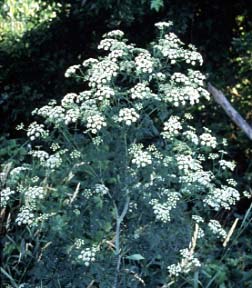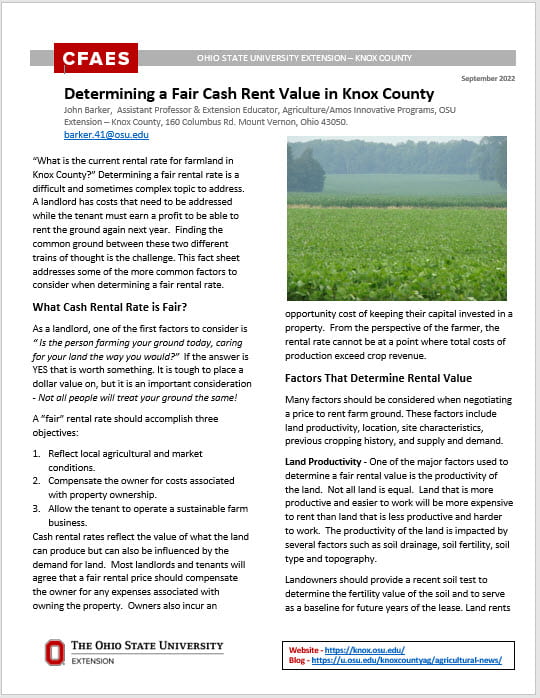
Alfalfa
 2nd cutting is well underway. Potato leafhoppers are very active. If you haven’t cut yet, continue to monitor, where damage is increasing, cut as soon as weather permits.
2nd cutting is well underway. Potato leafhoppers are very active. If you haven’t cut yet, continue to monitor, where damage is increasing, cut as soon as weather permits.
Click here for alfalfa insect scouting calendar
Click here for more information on Potato Leafhopper
Corn
 Our corn growth varies greatly throughout the county. Some fields are beginning to tassel and some field are at V8.
Our corn growth varies greatly throughout the county. Some fields are beginning to tassel and some field are at V8.
V12 to V13 – Six weeks after the plant emerges, V12 begins. Moisture or nutrient deficiencies may reduce the potential number of seeds, as well as the ear size, seriously. These two components of yield have key development during the period from V10 to V17. The length of time for the plant to develop through these stages affects harvestable yield.
Early maturity hybrids normally progress through these stages in less time and have smaller ears than later hybrids. Higher plant populations are needed for earlier hybrids to produce grain yield similar to normal-maturity hybrids in the adapted region. Cultivation of plants at this time will destroy some of the plant roots. Brace roots are developing from the fifth node and the first above-ground node.
V14 to V15 – Seven weeks after the plant emerges, V14 begins. The corn plant at V15 is only 12 to 15 days (around one to five V stages) away from R1 (silking). This vegetative stage is the most critical period of seed yield determination. The number of ovules that develop silks, and thus the number of kernels, is being determined. Any nutrient or moisture deficiency or injury (such as hail or insects) may seriously reduce the number of kernels that develop.
The tassel is near full size but not visible from the top of the leaf sheaths. Silks are just beginning to grow from the upper ears. Upper-ear shoot development has surpassed that of lower ear shoots. A new leaf stage can occur every one to two days.
Brace roots from the sixth leaf node are developing, and the permanent roots have continued to elongate and proliferate, eventually reaching a depth of about 5 to 8 feet and spreading several feet in all directions. In some hybrids, brace roots also will develop from the eighth and ninth leaf nodes or even higher. Some corn plants in North Dakota may only develop 16 leaves.
Table 5. Postemergence Herbicides in Corn – Grasses
Table 6. Postemergence Herbicides in Corn – Broadleaves
Soybeans
 Soybeans are starting to look a little bit better, however, there are still a lot of “yellow” beans throughout the county. Two possible reasons are Yellow Flash and Soybean Cyst Nematode. Other possibilities are seedling diseases and water-logged roots, more information on these topics next week.
Soybeans are starting to look a little bit better, however, there are still a lot of “yellow” beans throughout the county. Two possible reasons are Yellow Flash and Soybean Cyst Nematode. Other possibilities are seedling diseases and water-logged roots, more information on these topics next week.
After planting, the second biggest challenge we face is timely weed control. If you haven’t already made a postemergence application, it might be time to check your fields. Most beans (and weeds) are at stage that might warrant an application. The links below will contain OSU Herbicide rating for postemergence applications.
Soybean Postemergence Weed Control – Grasses
Soybean Postemergence Weed Control – Broadleaves
Soybean Growth & Development – R1: Beginning Bloom

- Open flower at any node on the main stem
- Flowering begins at 3rd to 6th node (V6 to V10 stage)
- Flowering period is 3 to 4 weeks
–Begins ~6 to 8 weeks after emergence
– Peaks R2 to R3; ends ~R5 - Vertical root growth rates increase rapidly
– As much as 1.3 to 3.2 in/day
Wheat
 Wheat harvest has come to an end and most of the straw is in the barn. From what I hear, wheat yields were pretty good with little to no disease issues.
Wheat harvest has come to an end and most of the straw is in the barn. From what I hear, wheat yields were pretty good with little to no disease issues.
If you removed the straw, remember to account for the additional fertilizer removal when planning for fertilizer needs next year. Read more here.
Double crop beans have been, or are being planted now. Click here for the Double Crop Soybean Production Guidelines from Dr. Laura Lindsey.
Misc. – Something you don’t see everyday.
I can honestly say that I have never seen one of these before! Click on the picture to see the video. If you know what it is, put your answer in the comment section. Be sure to check back next week for the answer!
… AND THE ANSWER IS – Horsehair Worm
https://entomology.ca.uky.edu/ef613
County Rainfall Update




 Seedlings: Cotyledons 7-33 mm long, 6-11 mm wide, egg-shaped but pointed at the apex. Stems below the cotyledons (hypocotyls) are without hairs, succulent, and often purple-tinged. Young leaves alternate, egg-shaped but pointed at the apex, and without hairs. Cotyledons and young leaves are pale green in color, with reddish tinted petioles.
Seedlings: Cotyledons 7-33 mm long, 6-11 mm wide, egg-shaped but pointed at the apex. Stems below the cotyledons (hypocotyls) are without hairs, succulent, and often purple-tinged. Young leaves alternate, egg-shaped but pointed at the apex, and without hairs. Cotyledons and young leaves are pale green in color, with reddish tinted petioles. Roots: Large, white tap root up to 6 inches in diameter.
Roots: Large, white tap root up to 6 inches in diameter. Stem: Branch from the root crown at the base of the plant, erect, large, smooth, purple-tinged.
Stem: Branch from the root crown at the base of the plant, erect, large, smooth, purple-tinged. Fruit: A berry, 7-12 mm, green when immature, dark-purple to black when mature. Contain a dark red juice.
Fruit: A berry, 7-12 mm, green when immature, dark-purple to black when mature. Contain a dark red juice.













 the last couple of weeks in December and into early 2021, eastern Ohio saw warmer-than-usual temperatures and a lot of rain. What does this mean for our pastures and hay fields?
the last couple of weeks in December and into early 2021, eastern Ohio saw warmer-than-usual temperatures and a lot of rain. What does this mean for our pastures and hay fields?